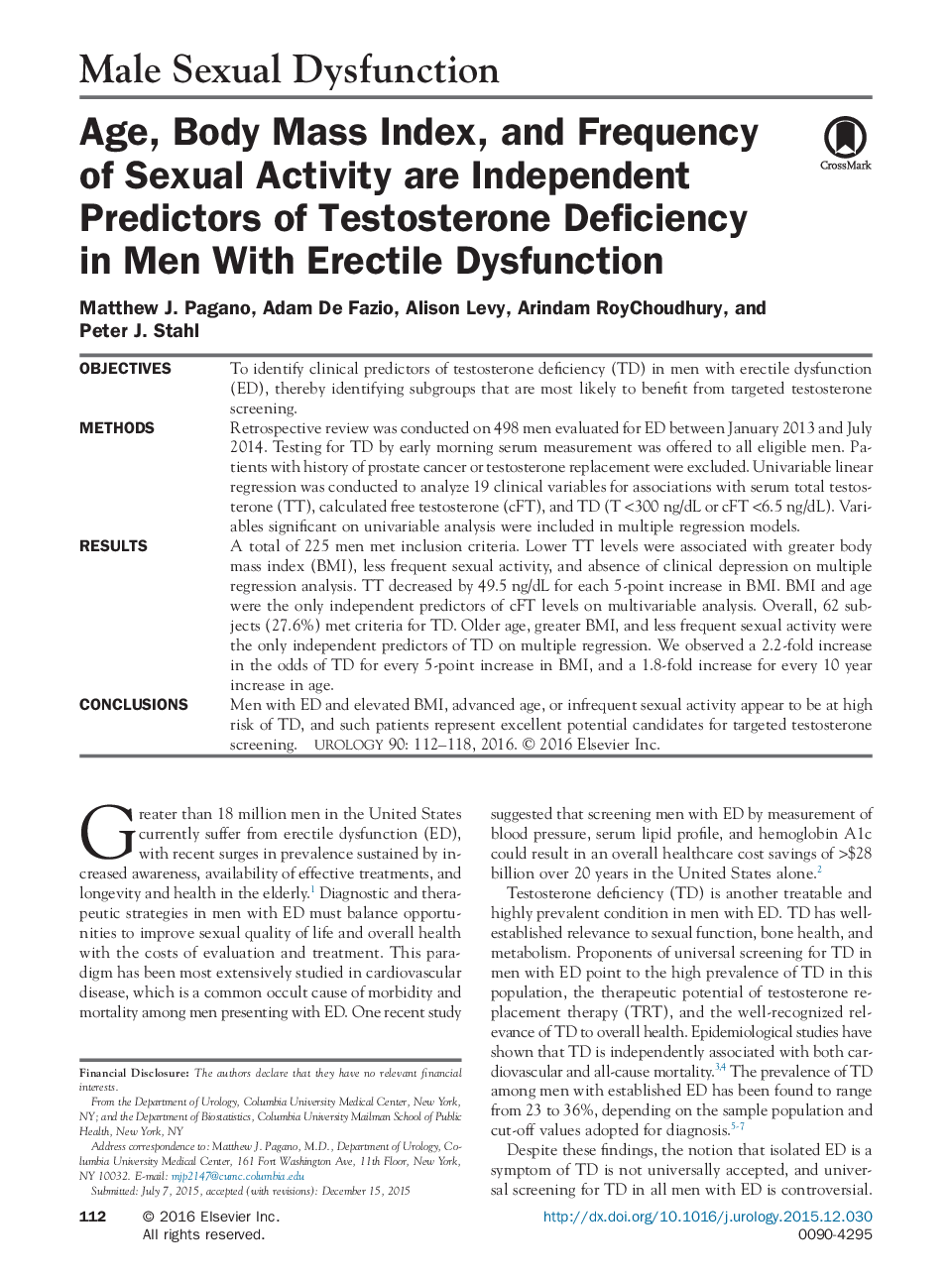| کد مقاله | کد نشریه | سال انتشار | مقاله انگلیسی | نسخه تمام متن |
|---|---|---|---|---|
| 6165839 | 1599262 | 2016 | 7 صفحه PDF | دانلود رایگان |
ObjectivesTo identify clinical predictors of testosterone deficiency (TD) in men with erectile dysfunction (ED), thereby identifying subgroups that are most likely to benefit from targeted testosterone screening.MethodsRetrospective review was conducted on 498 men evaluated for ED between January 2013 and July 2014. Testing for TD by early morning serum measurement was offered to all eligible men. Patients with history of prostate cancer or testosterone replacement were excluded. Univariable linear regression was conducted to analyze 19 clinical variables for associations with serum total testosterone (TT), calculated free testosterone (cFT), and TD (Tâ<300âng/dL or cFTâ<6.5âng/dL). Variables significant on univariable analysis were included in multiple regression models.ResultsA total of 225 men met inclusion criteria. Lower TT levels were associated with greater body mass index (BMI), less frequent sexual activity, and absence of clinical depression on multiple regression analysis. TT decreased by 49.5âng/dL for each 5-point increase in BMI. BMI and age were the only independent predictors of cFT levels on multivariable analysis. Overall, 62 subjects (27.6%) met criteria for TD. Older age, greater BMI, and less frequent sexual activity were the only independent predictors of TD on multiple regression. We observed a 2.2-fold increase in the odds of TD for every 5-point increase in BMI, and a 1.8-fold increase for every 10 year increase in age.ConclusionsMen with ED and elevated BMI, advanced age, or infrequent sexual activity appear to be at high risk of TD, and such patients represent excellent potential candidates for targeted testosterone screening.
Journal: Urology - Volume 90, April 2016, Pages 112-118
